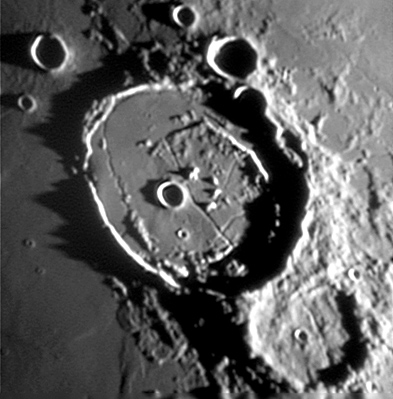February 26, 2016
A Perfect LPOD Image
Originally published May 2, 2005
Image Credit: Jim Phillips |
|
A Perfect LPOD Image Imagers sometimes ask me, "What do you need a picture of for LPOD?" I have a difficult time selecting a few objects to recomend because there are thousands of lunar features that still lack high quality images from terrestrial telescopes (and sometimes from orbital ones as well). A perfect image for LPOD (such as Jim Phillips' Posidonius above) usually has high resolution and often is acquired at a low sun angle, but most importantly it beautifully illustrates something interesting about the lunar surface. And ideally it is of some feature that hasn't been seen in previous LPODs. That means that another imageof Copernicus, Plato, Gassendi, Tycho or Clavius will seldom make it on to LPOD because most new images of those very popular features don't tell us anything new. What is really exciting is a good image of a feature that has never before been shown on LPOD. Use the LPOD Search function to see if one of your new images is of a feature already presented by LPOD; if so, check to see if your image shows something the earlier one doesn't. Here are some more specific recommendations of what to image:
Yesterday's LPOD: Rayless Crater Tomorrow's LPOD: LPOD of the Month - April 2005 |
|
Author & Editor: |
COMMENTS?
Register, Log in, and join in the comments.




